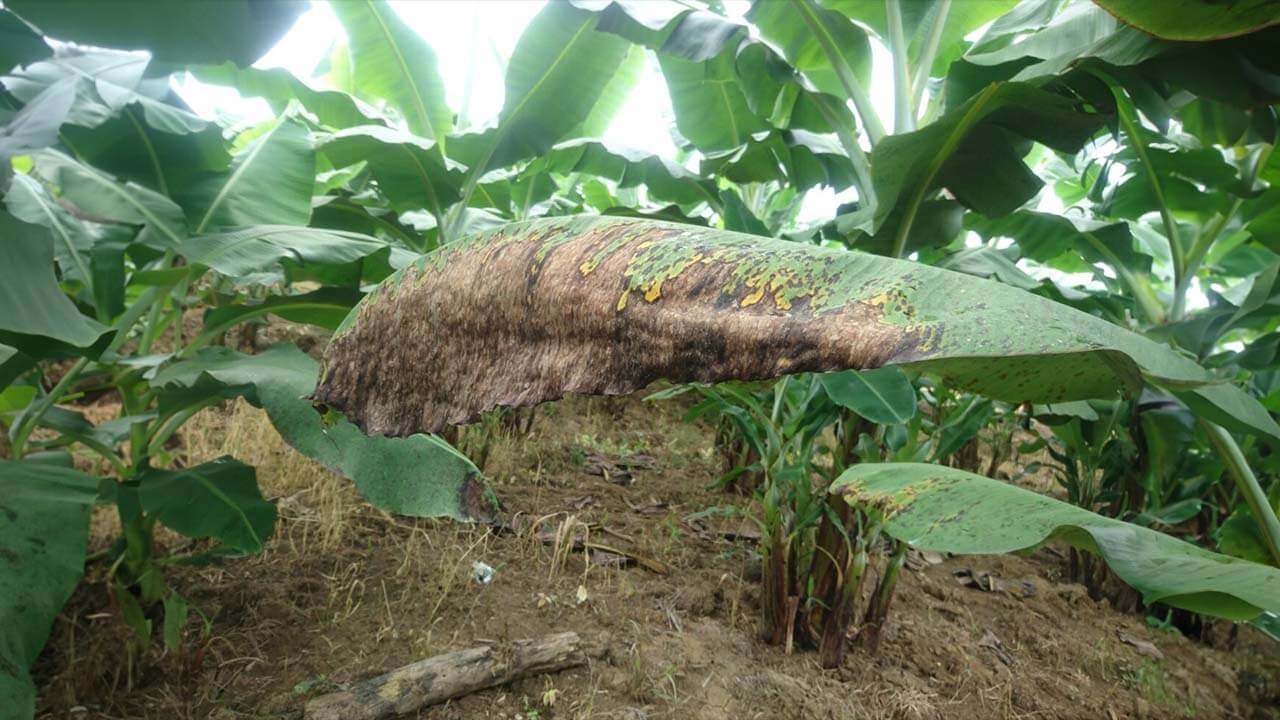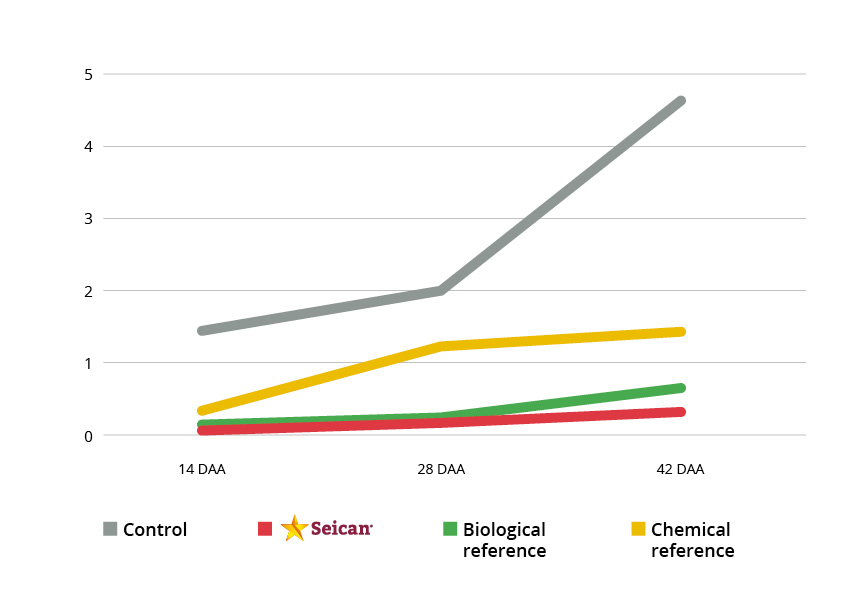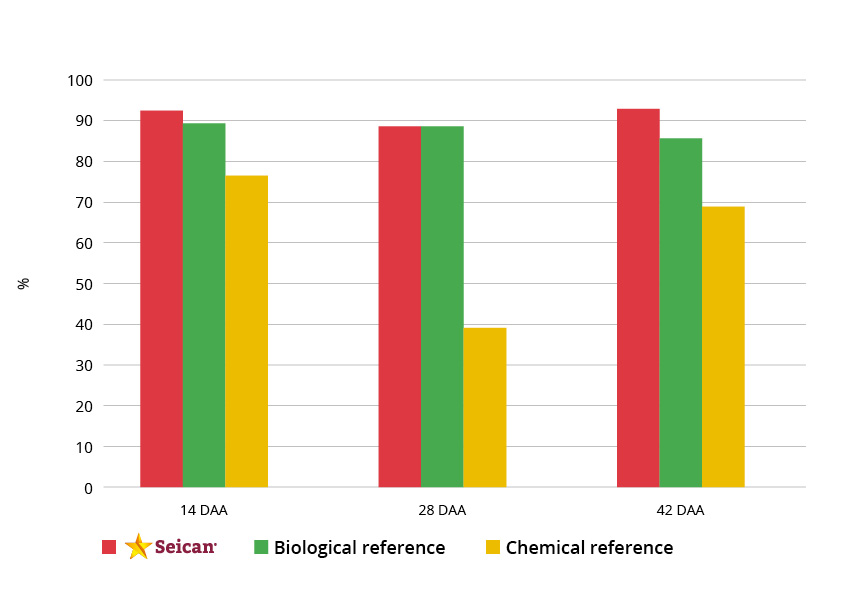Controlling black sigatoka: how to tackle a major banana disease

Banana leaf with visible black sigatoka symptoms
Black sigatoka is a serious foliar disease of bananas and plantains, which occurs mainly in tropical and subtropical regions. It is a pathology that has an enormous negative impact on production yields.
Caused by the fungus Mycosphaerella fijiensis, black sigatoka destroys leaf tissue and reduces the plant’s photosynthetic capacity. The fruit affected by the disease ripens prematurely and weighs less than the fruit of a healthy plant.
It is essential to control banana diseases in order to prevent the progression of a pathology which, in the case of sigatoka, can cause 100% loss of production due to its serious effects on the quality of the fruit.
The first thing to learn about this banana disease is to identify the environmental conditions that favour its development. Black sigatoka is particularly susceptible during periods of heavy rainfall or in environments with high annual rainfall, high relative humidity (above 80%) and high temperatures, in the range of 22 to 29º.
What are the symptoms of black sigatoka?
The symptoms of black sigatoka, as one of the most important banana diseases, are very visible and easily recognised by the presence of stripes or spots on the leaves, especially when it is in an advanced stage.
What starts as small discolouration or freckles on the underside of the leaf becomes, in more advanced stages, black spots surrounded by a ring of the same colour and a yellowish halo. The edges of the leaves show signs of necrosis and tend to wrinkle and dry out. Their photosynthetic capacity is lost and, in the most severe cases, the leaves finally die and fall off within a few weeks.
Control of black sigatoka requires growers to be very vigilant, as bananas are a year-round crop in tropical and subtropical regions and their development is closely linked to the climatic conditions that allow the disease to occur.
Minimising the risk of resistance
Management strategies for black sigatoka in bananas include the use of fungicides, but these must be applied in accordance with the recommendations of the Fungicide Resistance Action Committee (FRAC), the international organisation that classifies fungicides and issues guidelines for their use based on their resistance behaviour.
This is where Seican, a biological fungicide and acaricide developed and registered by Seipasa for the control of black sigatoka in bananas, comes in. Seican is included in FRAC group BM 03, an element that certifies the product’s ability to prevent the development of resistance. Group BM 03 is also the group that contains the most innovative molecules in the microbiological and botanical group.
FRAC’s support is very important because banana growers, i.e. those who face black sigatoka every season, carry out their rotations according to FRAC’s classifications and recommendations. Its guidelines regulate the use of available molecules and establish the rotation of different modes and mechanisms of action to minimise the risk of resistance.
Fungicides against black sigatoka
Seican is a fast and effective solution thanks to its curative and eradicative action that works by contact. This is illustrated in Figure 1, which shows the results of an efficacy trial conducted in Ecuador on bananas. The results show how the product performs in the face of very high incidence, with an excellent ability to control the disease from early application.
Figure 1. Evolution of the severity of the disease (black sigatoka) on the banana crop after application of Seican.
Figure 2 shows an efficacy of Seican of more than 90% in stopping the progression of the disease, with records exceeding the performances of the chemical and biological references compared in this trial.
Figure 2. Efficacy (%) of Seican in controlling black sigatoka on banana crops.
In addition to fungicide action, the management of black sigatoka in banana suggests the application of a series of cultural practices necessary to minimise the risk of disease occurrence.
Destruction of leaves is recommended where the incidence of sigatoka is very high. In addition, surgery and removal of dry parts of the leaves to prevent new infections, maintaining adequate spacing in planting density or the use of drainage to prevent excessive rainfall are recommended.



